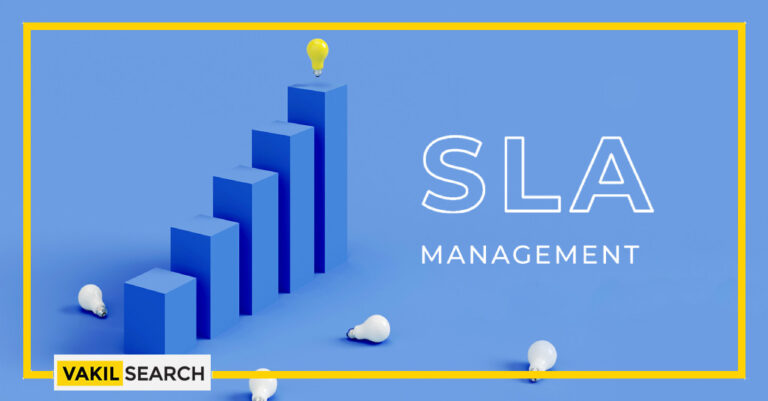If you are stuck in coming up with a sustainable Service Level Agreement, this article is the perfect pick for you! Read on to learn about the benefits and guidelines of an effective SLA.
A Service Level Agreement is a mutual legal arrangement between the service provider and the consumer where all the terms and conditions of the service are clearly stated and agreed upon. In this case, the service provider should provide all the promised services within the stated duration.
An SLA is outlined after detailed assessments. An ideal Service Level Agreement includes specific information about the objectives, terms of service, responsibilities of customer and service provider, penalties on failed service, etc. SLAs should be crisp, informative, and cater to the requirements of the user and service provider.
Benefits of Service Level Agreement
- SLA outlines the extent to which the service and utilities, and assistance will be provided. This eliminates unrealistic expectations
- SLA is legal proof of the commitments that are promised to be fulfilled. Legal actions can be taken on denial of providing promised services
- SLA is a document that helps in pointing out the failed services and acts upon those to upgrade the service system
- Clients can show grievances on the SLA as it contains the procedure to receive feedback
- SLA is ideal for facilitating a business relationship between the service provider and clients. This brings clarity to the image of the company.
What Should be Included in an SLA?
- Agreement Overview- It has an initial agreement pointing out the parties involved, the initial date, and a service overview
- Description of Services- Accurate information of terms of services and an elaboration on the service provided, hours of assistance, methods of service, and list of applications and technology used
- Exclusions- Information about the services that are excluded will prevent confusion
- Service Performance- The client and the company offering the service should draft performance analysis metrics to estimate the kind and levels of service by the provider
- Redressing Compensation- The defaulter party will pay monetary penalties upon failing to provide promised service.
Apart from these main points, the SLA should also include stakeholders, security actions to be taken, Risk management and disaster recovery methods, service tracking and reporting structure, periodic report and change processes, termination process, a signature of approval, and other agreed-upon points.
To come up with a successful SLA plan, you must seek help from an experienced lawyer who can break down all legal terms and set up a perfectly sustainable SLA outline that can be helpful and agreeable for both parties. To build up a successful healthy relationship between customer and client, one must carefully chalk out a plan to elevate the standards of the Service Level Agreement. Below are some guidelines for creating an outstanding SLA.
1. Set Realistic Goals
SLA defines the value and standard of a service provider. This legal document clearly points out the particular services that are to be provided while outlining the services that are excluded. This ensures that there is no misconception between the two parties. Since the expectations of both parties are clearly mentioned, it becomes easier for the client to decide to work with the service provider. Inform your clients about how effectively you will assist. You can perhaps offer a free trial scheme to let them judge the quality of your service. It will be unprofessional of you if you create expectations that you cannot achieve.
2. Make Sure Everyone Is on Board
Before finalizing an SLA, you need to ensure all involved parties’ needs are addressed and met with your draft SLA. Make necessary changes to potentially problematic steps. Chalk out agreeable terms and conditions so that you do not have to make last-minute changes or start over from scrap.
3. Be Specific
Remove ambiguity from Service level agreements. You would not want to join the business leaving your client to guesswork. While drafting an SLA on uptime as an IT service provider, you should include a specific percentage of uptime you are willing to provide. Use clear terminology to bring clarity reducing conflict among both parties.
4. Identify Key Metrics
You should analyze the quality of service you provide and if the expectations are being met. While providing services, you should also collect data about cases where you failed to meet specific demands, such as the downtime for the IT service or metrics, including deals closed, leads generated in a specific time, monetary penalty, and other measurements.
5. Clauses for Unexpected Events
Staffing challenges, severe weather, internet shutdown and other unexpected challenges might pose a disruption to the flow of service. SLAs should account for those challenging events and create clauses on the anticipation. Even if you cannot have a clear conception of upcoming challenges, you can definitely outline the measures you will take and how you will handle the situation for customer satisfaction.
6. Scrutinize the Details
Small details are essential in SLAs. If your uptime is 99.999 percent leading to only around 5minutes of downtime each year, misplaced 99.9999 can change that to 31 seconds resulting in wrong data. Therefore, it is better to scrutinize it with professional help to reap long-term benefits.
7. Set a Review and Revision Period
There should be a provision for reviewing Service Level Agreement after a preset time period making it flexible to change as per need. Although SLA covers a specific set of services within a fixated period, both parties need to review after a specific time to ensure that the partnership is working and the needs are being met. Make changes to SLA if needed.
8. Get Your Staff Ready
As a service provider, you need to train your staff to follow the SLA protocols while providing assistance to the clients. A outsource support system can be built only by training staff to develop expertise in each sector. Their performance will add to your company’s performance metric, extending the opportunity to get more clients.
Conclusion
Drafting a Service Level Agreement can be a tedious task. You might want an experienced legal service provider such as Vakil Search to develop your ideal SLA that efficiently covers all your service specifications.
Read more,










